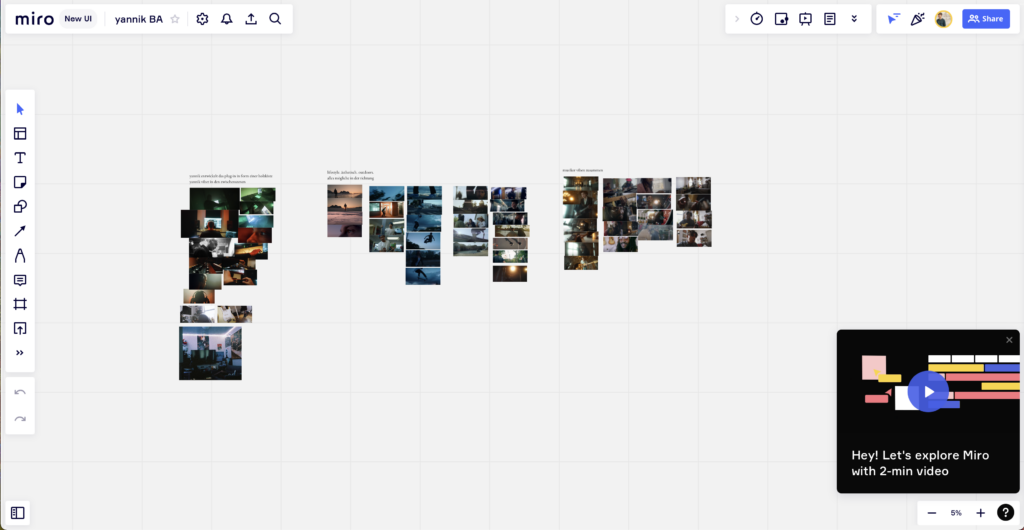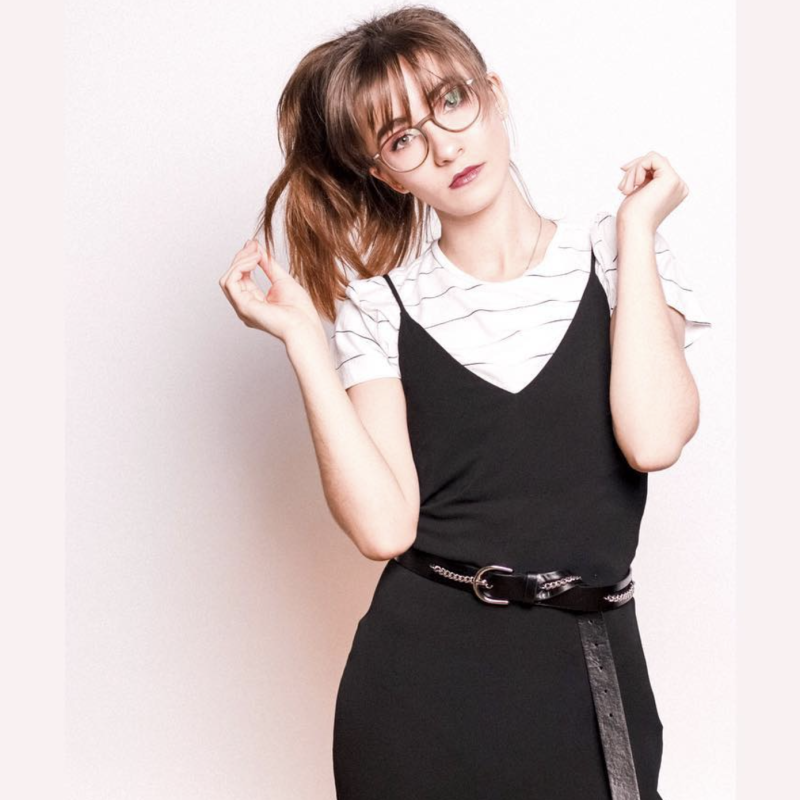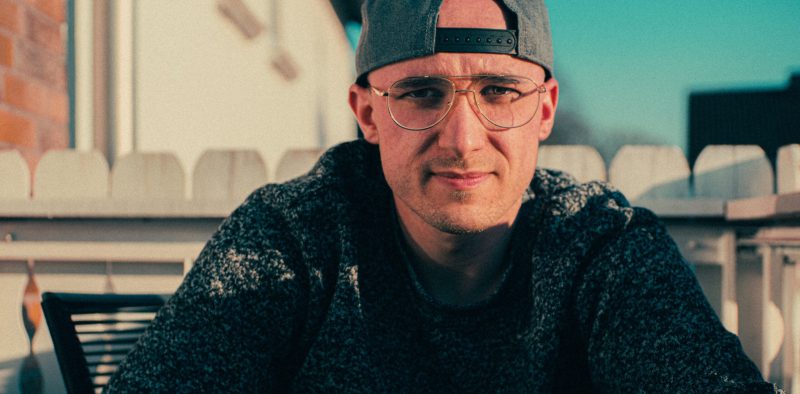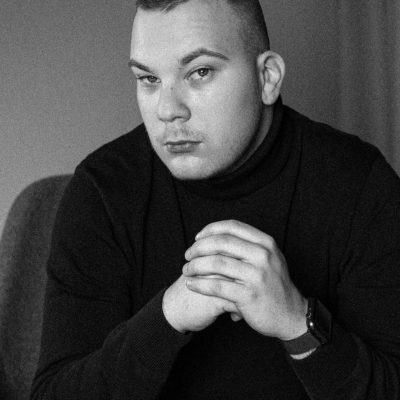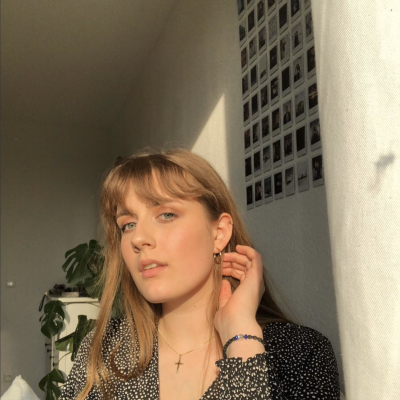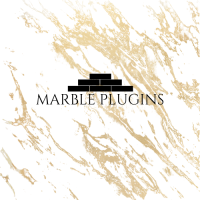It's not what it looks like, it's what it sounds like.
Introduction
Assessment 2 of the Collaboration Project deals with the implementation of the ideas from the project pitch in the first assessment. In essence, this project deals with the implementation of a commercial for an imaginary effect plugin, the Marble 45-E. Around the spot the website with store, description and documentation should be created. For the realization of the project the following aspects were of major importance:
1. Recording of video material
2. Video editing
3. GUI design
4. Website Design
5. Sound Design
Except for the last point I was now dependent on 4 collaborations. From my friends and contacts I tried to find someone who could help me. It was especially helpful for me that I had helped some of them before with their projects. From now on our team consisted of Kevin Klein, Lorena Stojanovic, Torge Jöris and Nina Pohl. You can check out Ninas project on her website here and Torges project here.
To collect approaches and ideas I started to create a mind map in which I collected the main points of the project. After the mind-map image we will look at the time management for the project.
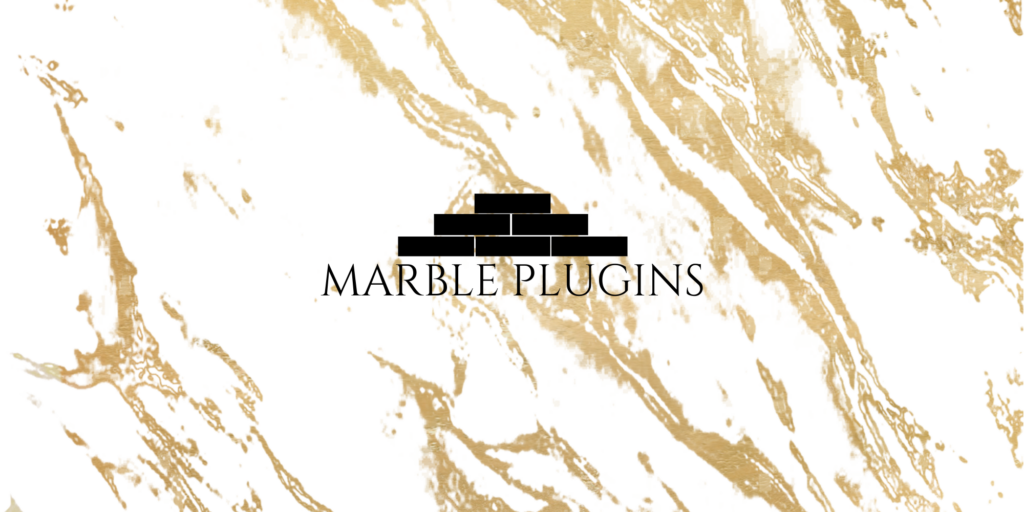
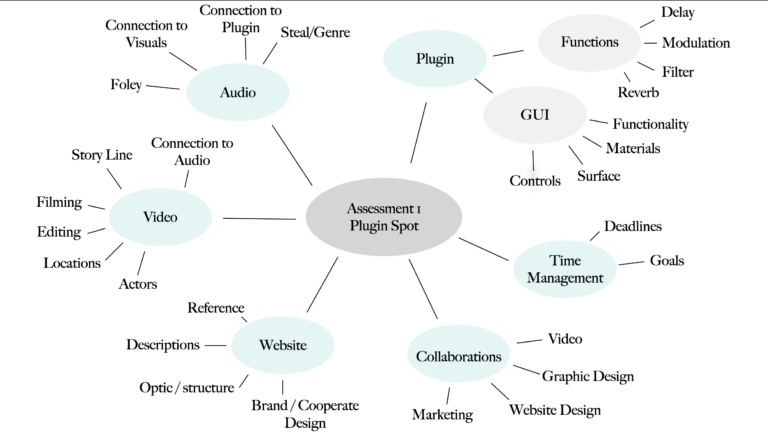
Time Management
It was important to create a rough schedule with the individual partners beforehand. Since we are all students, employees or both at the same time, we had to see how to plan ahead. To do this, I first created the schedule shown on the left. This was used as a rough orientation point, and it proved difficult to adhere to it during the course of the project.
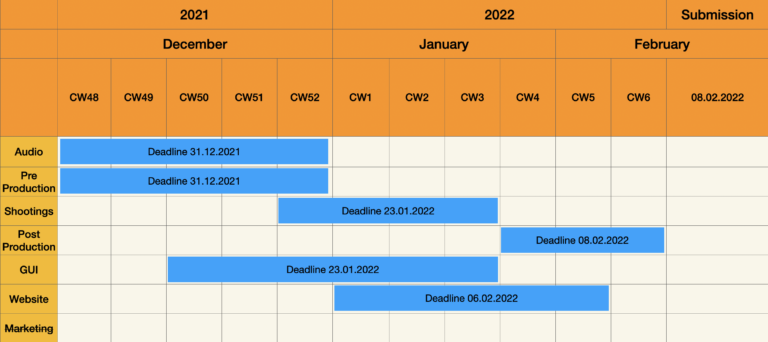
The Plugin
Before we got into the spot and planning for the shoot, it made sense to first focus on the plugin itself. What functions should it have? What should it look like? First of all i had to think about the functionality and graphical interface of the plugin. Which effects should it be able to bundle, how could this be simply implemented visually. The decision was made to bundle four different effects: Reverb, Delay, Filter and Modulation, basic effects that can be found in almost every music production.
While the functionality should be kept simple, I wanted to come up with something fancier for the graphics and started looking for materials and textures to incorporate. Especially marble convinced me, because I associate something high quality, expensive and noble with marble. I decided to use this as the main surface and this is where the idea for the name of the website Marble-Plugins came from.
As a point of reference for the design, I pulled a reference plugin to get a more accurate idea for the visual component. This helped to create a sensible arrangement of the plugin components. With all this in mind, I moved on to my first collaboration, the graphic design. To give my ideas some form I used the 3D software Blender and created small drafts. Since my collaboration partner Nina is specialized in 2D design, we sat down together and designed the plugin together in Blender. We put together the individual components and created the renders of the plugin which we wanted to use for the website.
Another idea that came to me at this point was to base the plugin on an analog device. Since there isn’t one that looks like that, I started to build one out of wood, aluminum foil, cardboard and old knobs from a guitar amp.
After the concept for the plugin was developed I started with the video team, consisting of Torge and Kevin, to develop a concept for the spot.
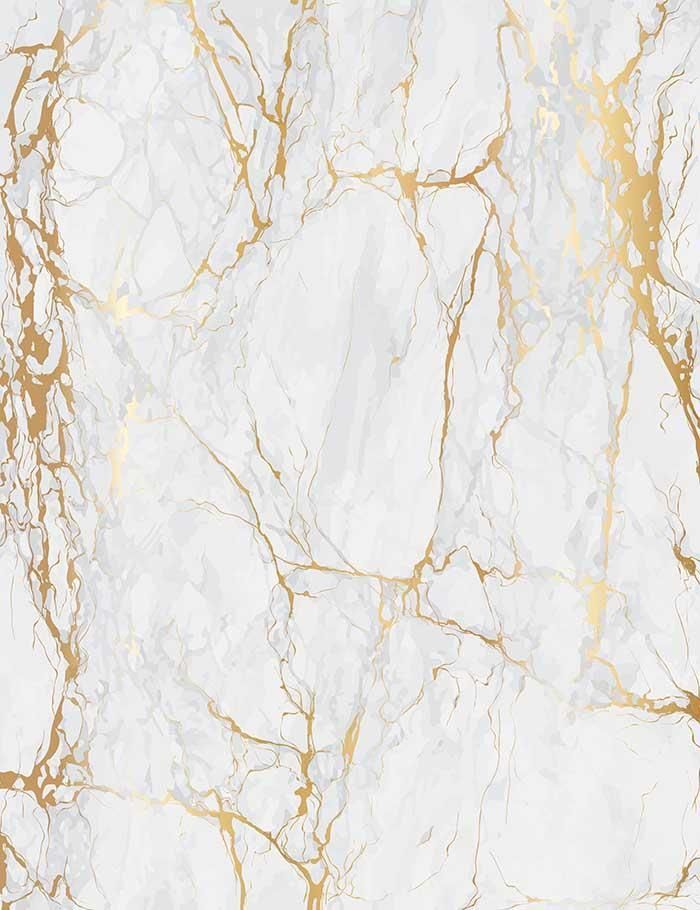
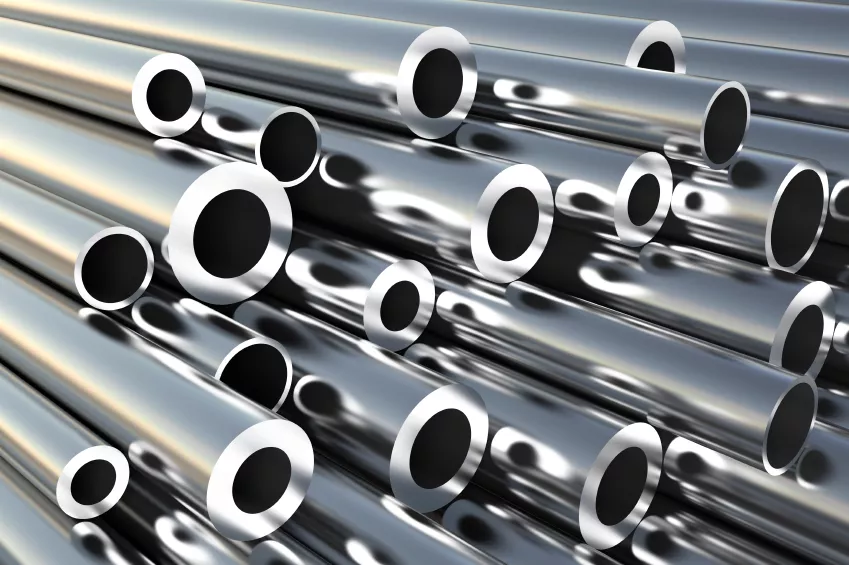


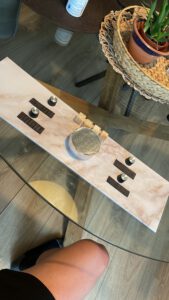
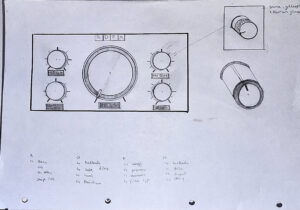
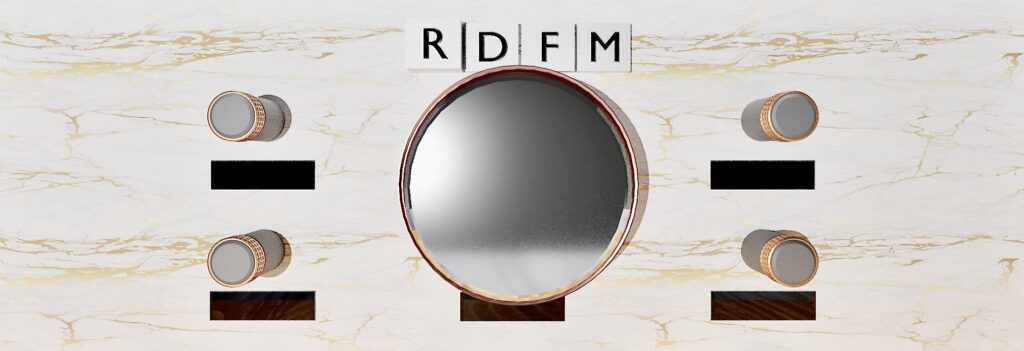
Video
Together we created a basic concept for the design of the spot. We used a Coca-Cola commercial as a reference. This was produced for the 2014 Superbowl. We agreed that i should produce the audio before we started. Like this it was easier for the Video Team to work efficiently and creatively. Kevin created a mood board that gave me a certain feeling for the upcoming video while producing the song for the spot.
The slogan under which the spot should run is: It’s Not What It Looks Like, It’s What It Sounds Like. Our thoughts behind it: Despite our commitment to give the plugin a unique look, the core is its function. To underline this we have chosen this slogan. We collected more ideas in numerous other zoom meetings. Here we started to write a rough script for the spot which looked like this:
What initially looks like chaos turns even on the second look out to be chaos. In order to help you follows the explanation. What we have recorded here is our idea of dividing the spot into individual sections which are assigned to one of the plugin’s effects. This should also be made acoustically recognizable in the accompanying music. We wanted to capture the development of the plugin from idea to elaboration to the end. Possible scenes we wanted to integrate are recordings of musicians, studio recordings and music consumers.
The basic storyline we came up with for this should be that we capture the creation process of the plugin from the idea to the development of the plugin. The individual scenes that are assigned to the respective effects should be able to be associated with the effects. The choice of which scenes we assign to which effect came about in the course of the shooting and is explained in more detail below.
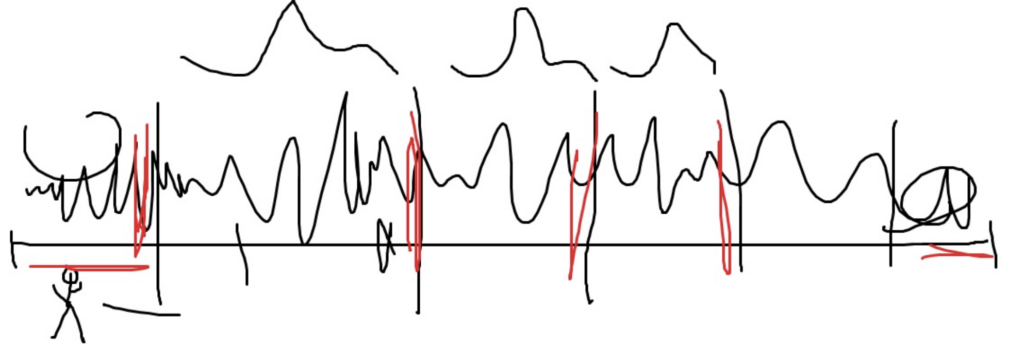
Tessellate
Some insights on our shooting day with tessellate.
Our recording day with the band Tessellate started in their rehearsal room in Aachen. The contact to the band came about through our videoman Kevin Klein, who had made several shootings with the band before. It was important to us to make the recordings as natural as possible and we decided to film the band rehearsing. Due to the corona pandemic, however, it was not possible for us to record the band at a live gig at that time. We didn’t give them a script, we just gave them the instructions to rehearse normally.
After about 2 hours of rehearsal with lots of fun and later deaf ears later, we rounded off the evening together with dinner in the restaurant.
In the video, the band represents the delay effect of the plugin. In the song of the spot, a delay effect is used on the solo guitar. This is visually supported in the video by the recordings of the band and especially the guitar. The visual fade-in of the guitar at the time when it is also playing in the song is intended to unconsciously draw the viewer’s attention to it.
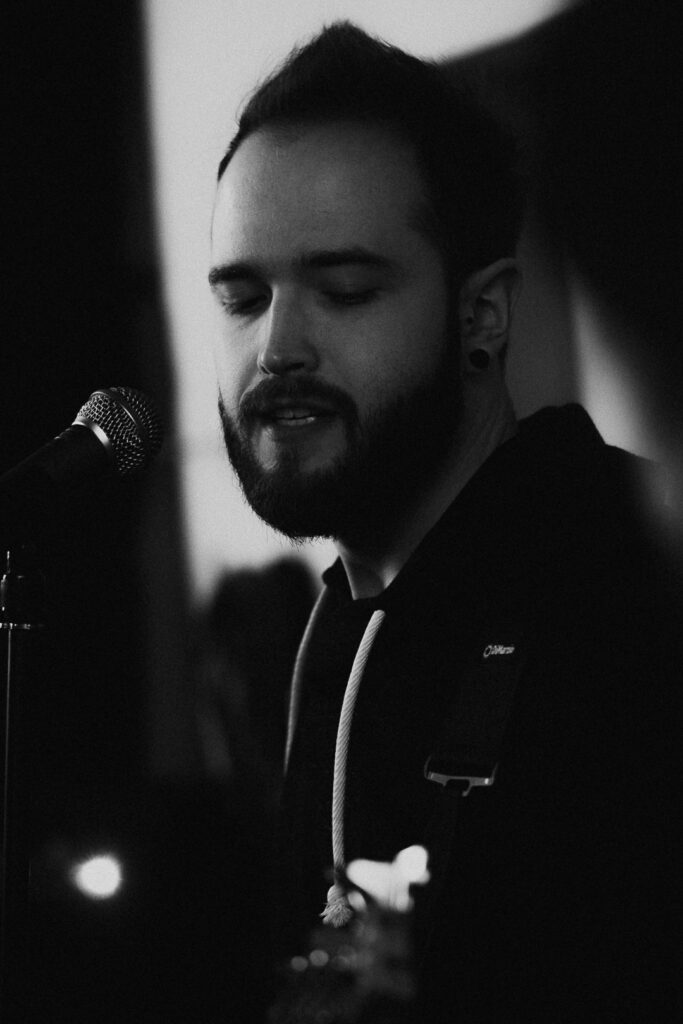
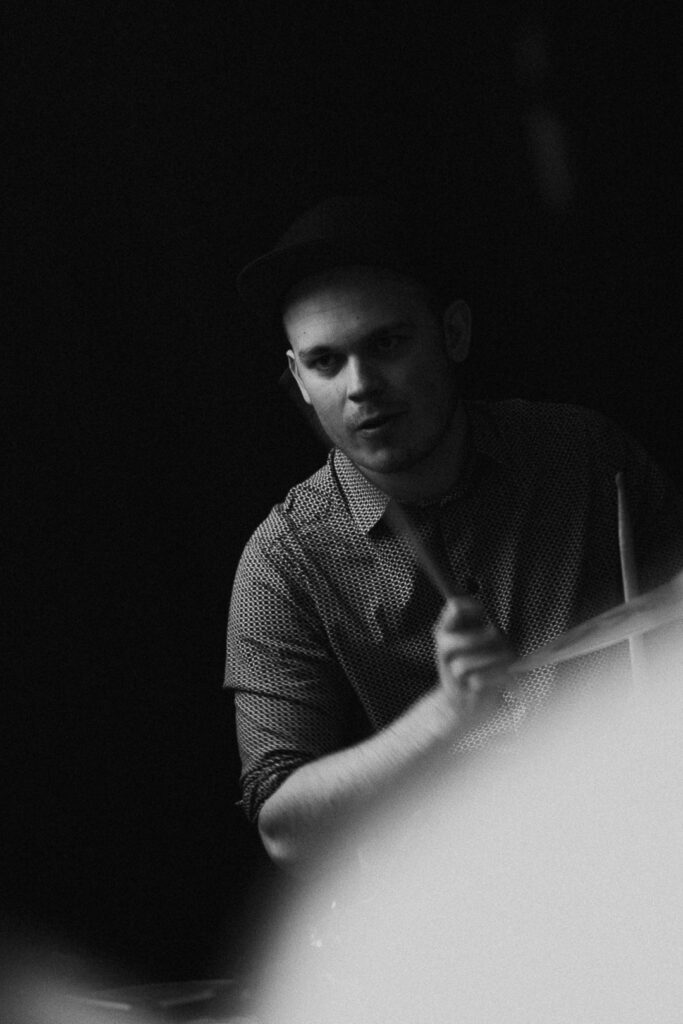
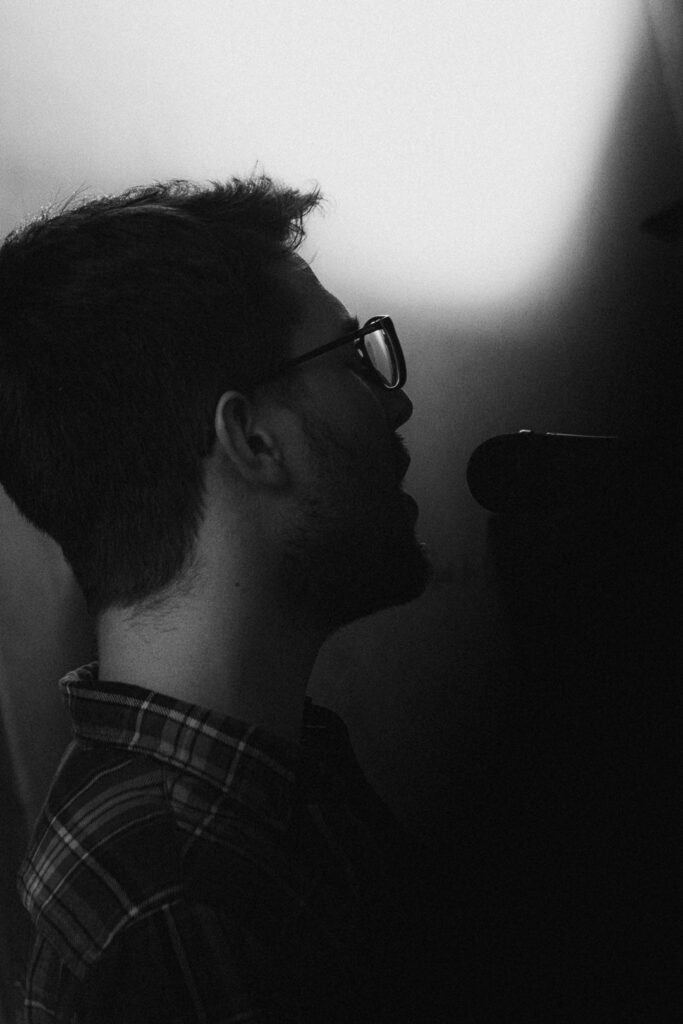
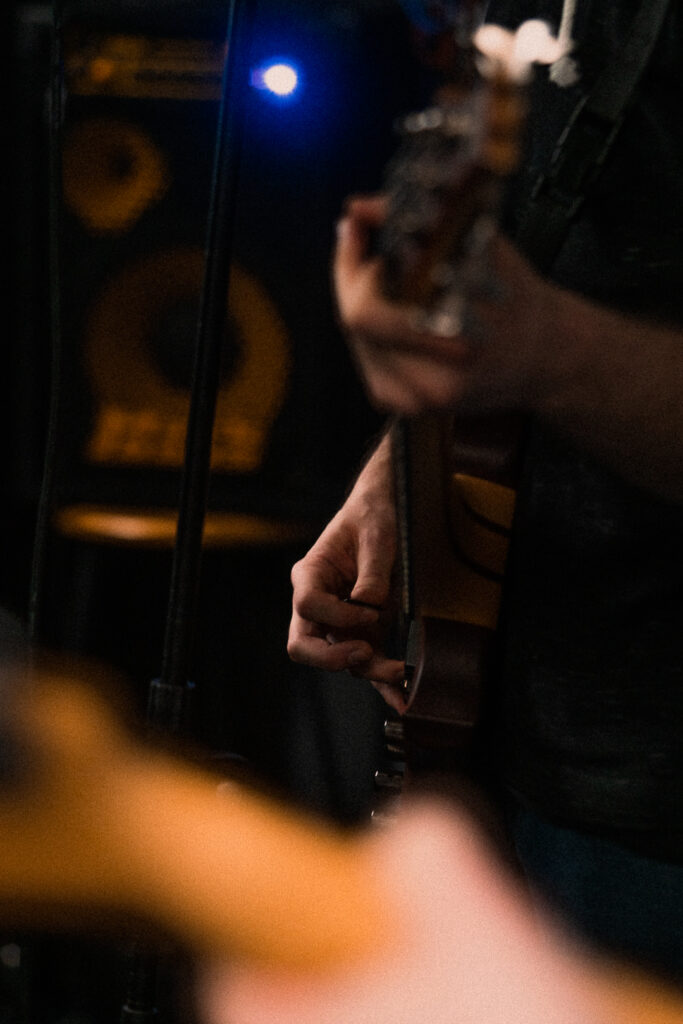
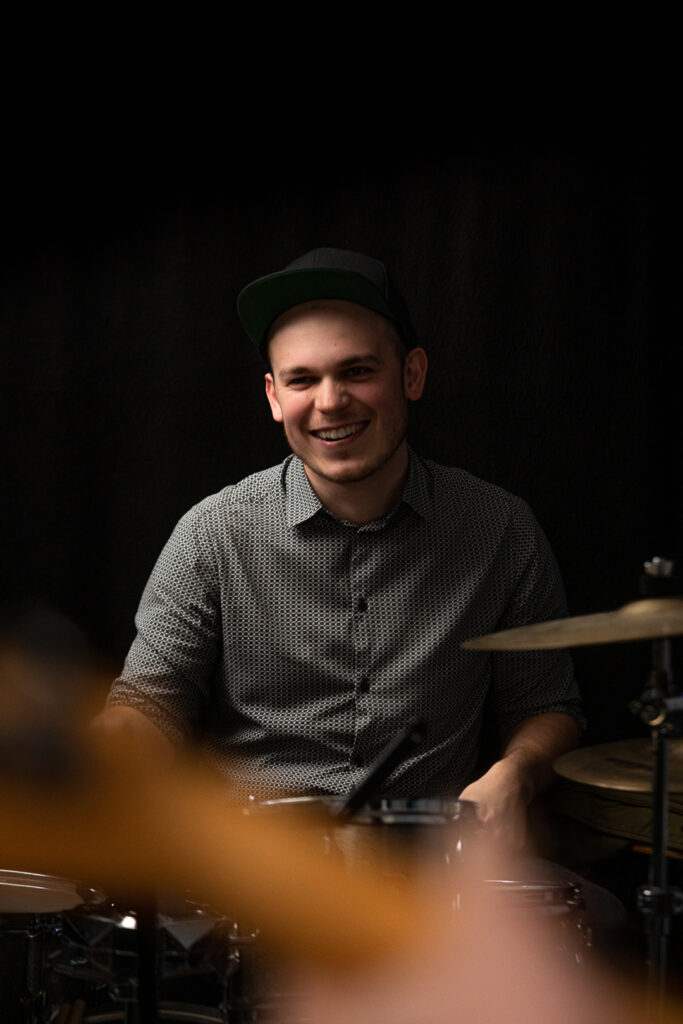
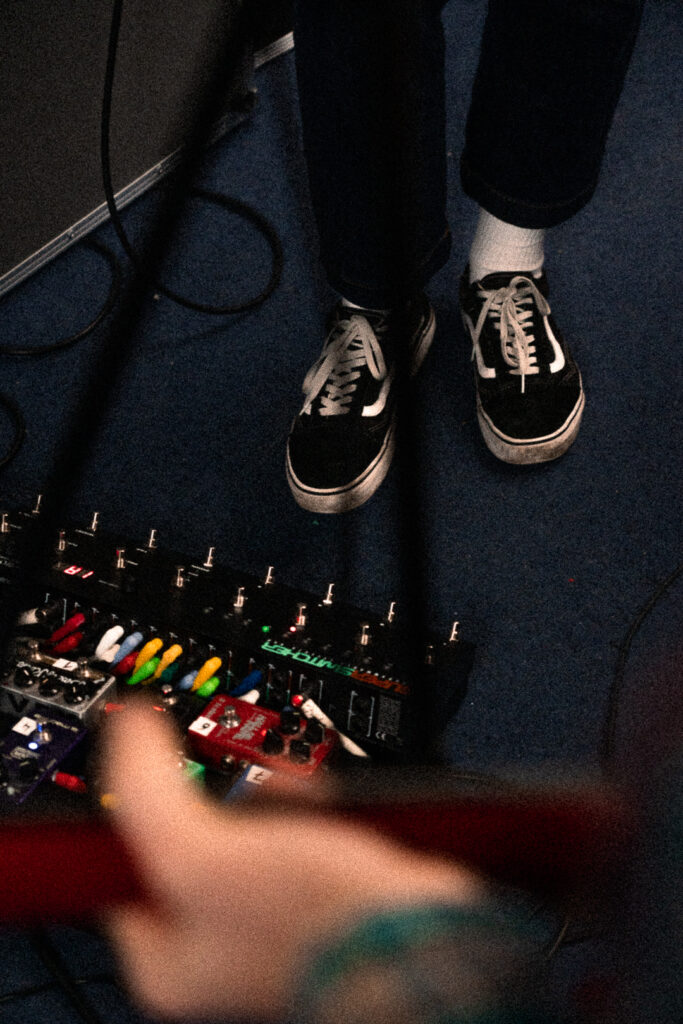
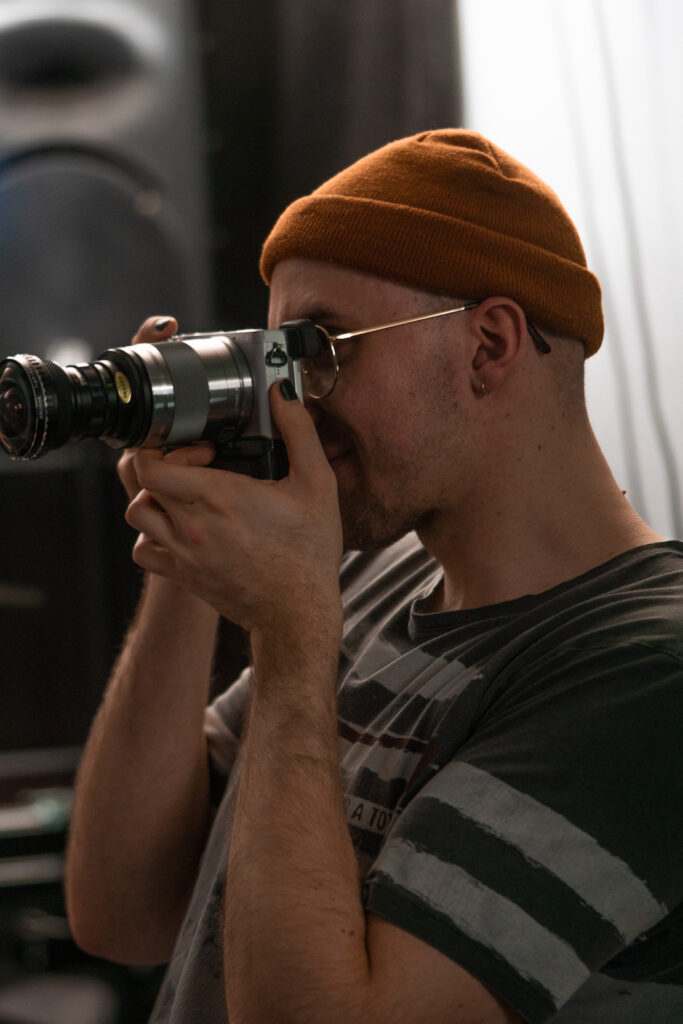
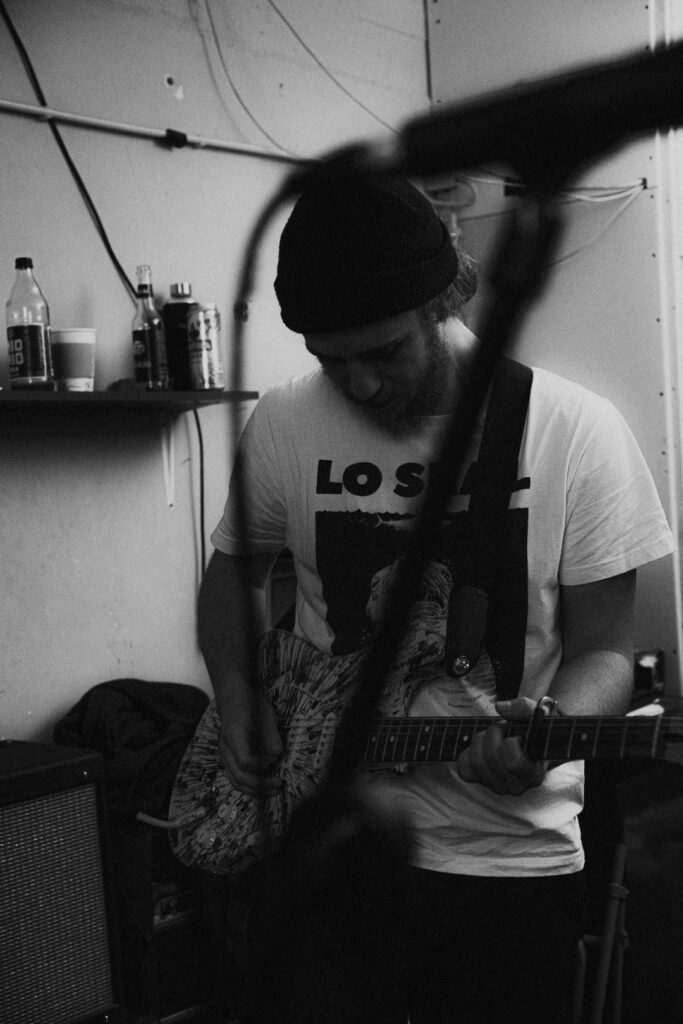
Basketball
For the remaining scenes we decided to shoot outdoors to reduce the risk of infection as the number of corona infections was rising sharply at the time.
Our idea to visualize the reverb effect was to find a location in which this effect naturally occurs. We found a skate and streetball park under a large highway bridge in Cologne. At this point the weather was getting worse, but we did find a lone basketball player preparing for his summer streetball season. Philipp, the hobby streetball player with professional ambitions, agreed to be filmed and photographed during his solo training. The attempt to record Foley sounds from the natural reverberation was, however, prevented by a storm front which pushed my Tascam-Recorder to its limits.
For the day, our shoot was over from that point as the storm had reached its peak.
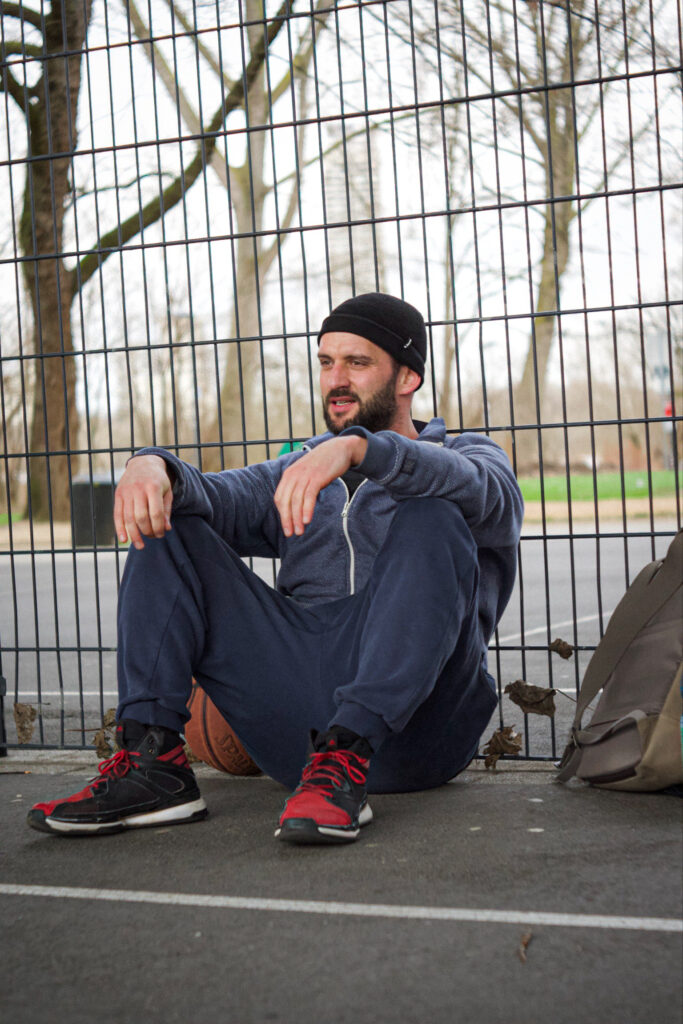
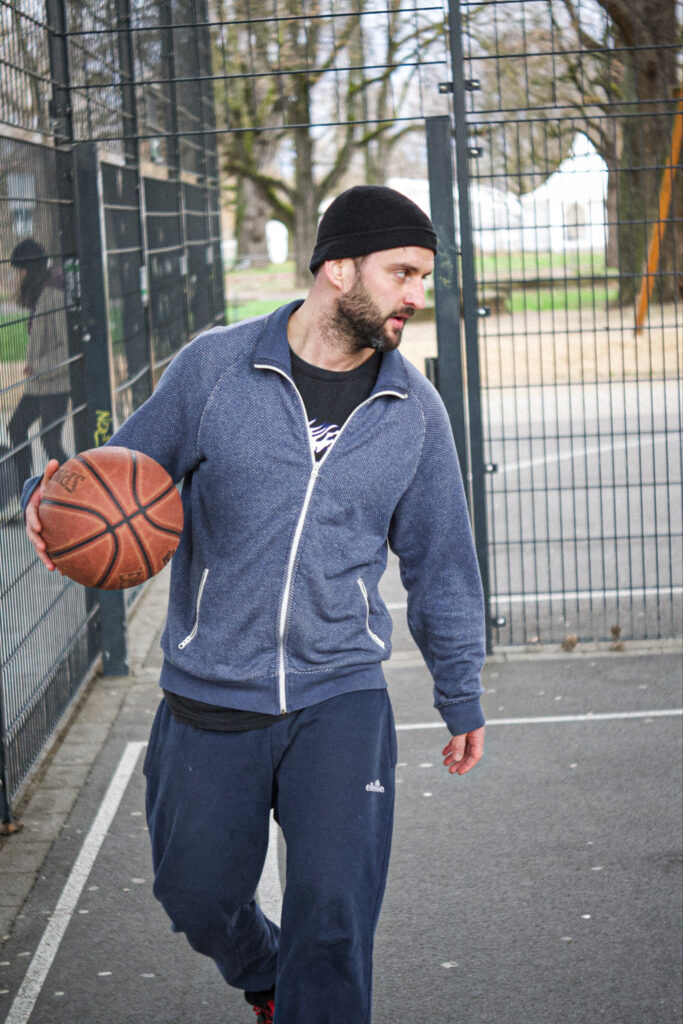
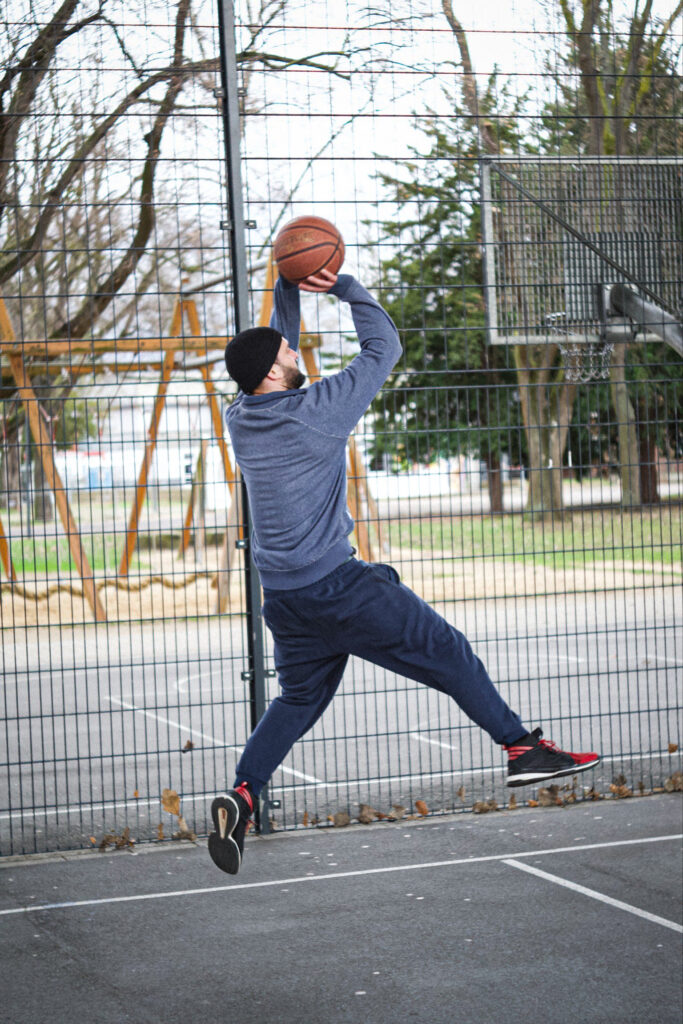
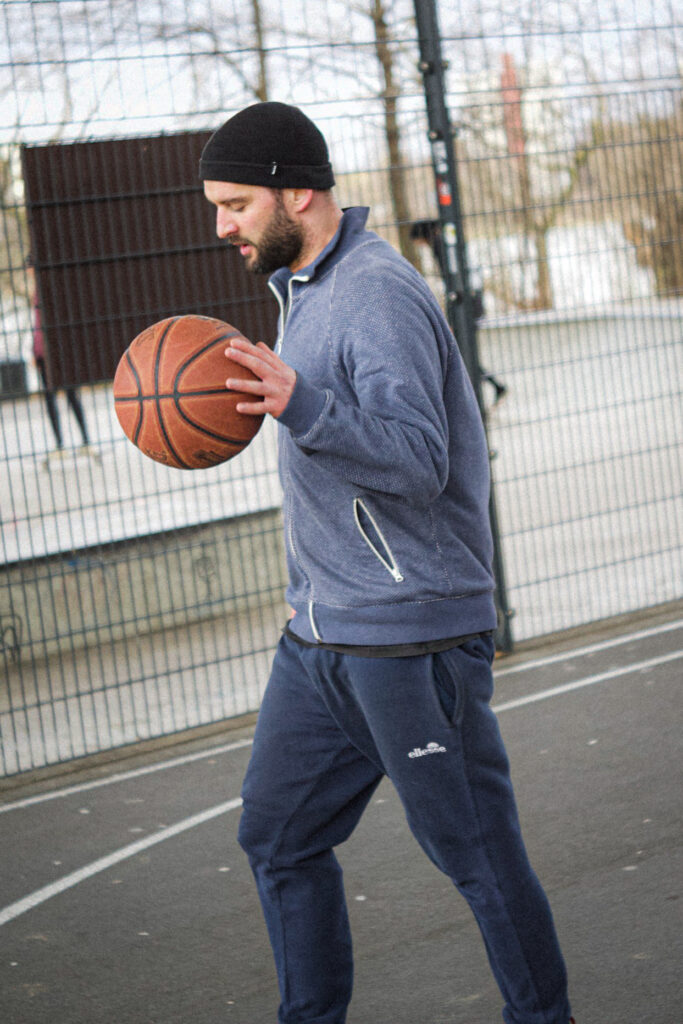
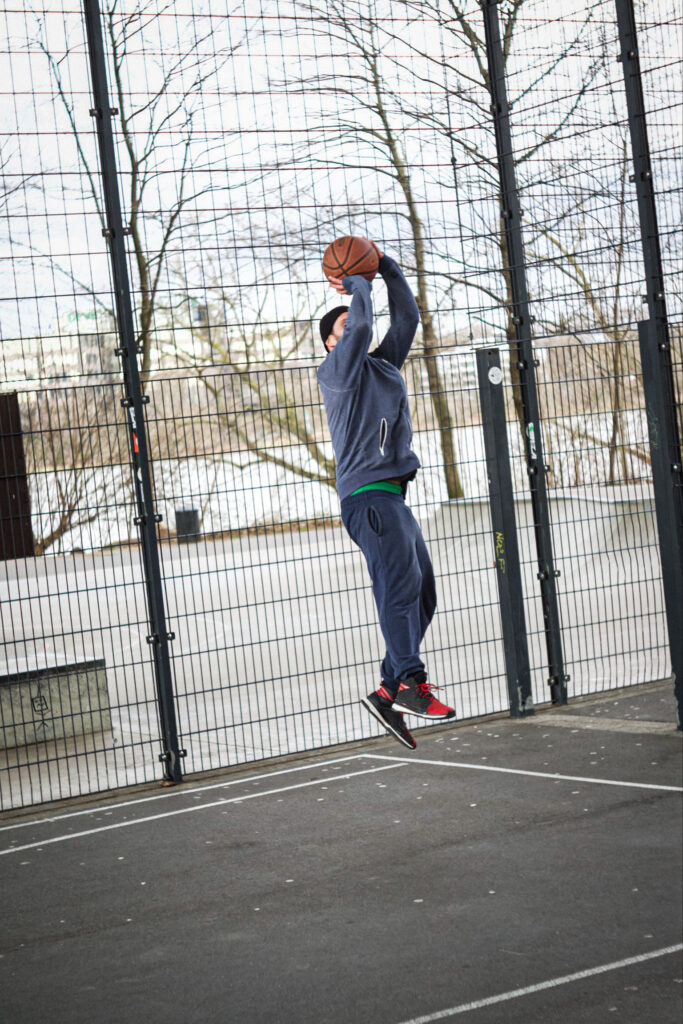

Longboards and Roller Skates
Some insights on our shooting day with skaters.
The other shooting day the weather was kind to us. Two effects were still open: filter and modulation.
For the filter effect, we chose footage from Greece that Kevin shot there on his vacation. In this part the song calms down and this is supported by the calmer footage. The applied low-pass filter is supported visually by a subtle black filter in the video that overlays it.
For the modulation effect, we decided to go to a spot in Cologne that is the hotspot for the longboard and roller skate scene when the weather is good. The athletes here have a great connection to the music. While the roller skaters listen to disco house music via Bluetooth systems and dance to it, the longboard skaters mostly ride with in-ear headphones. One of the skaters tells me that music is very important in these scenes and that it connects all of them. The openness and sympathetic streak of the skaters brought us very nice video material which is representative of the effect of the modulation. The modulation is a phaser effect that modulates the track’s master. In a short sequence of a roller skater, we underline this effect by recording this sequence with an exposure time of 1/30, which makes the image look washed out, similar to how the phaser effect washes out a clean sound a bit.
All the protagonists in the video are very individual. But they have one thing in common: the music. Each of the four characters (the band Tessellate, the basketball player, the longboarder and the roller skater) has their own individual style and interests. This versatility should be reflected in the plugin through the different application possibilities, according to the motto: Our results with the plugin can be as different as we are. Each special in its own way.
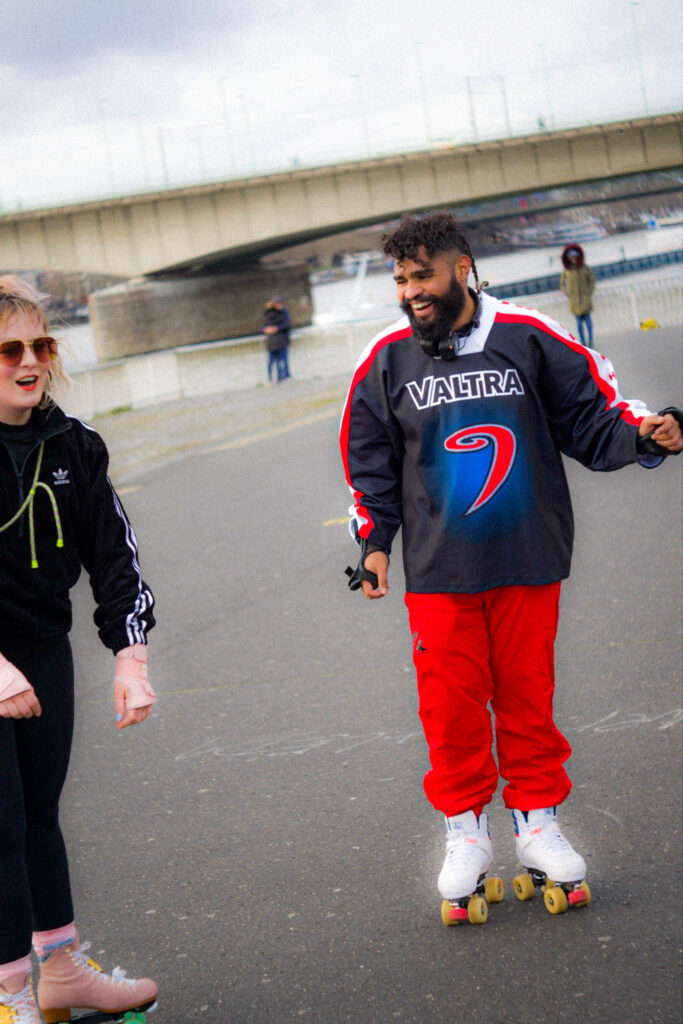
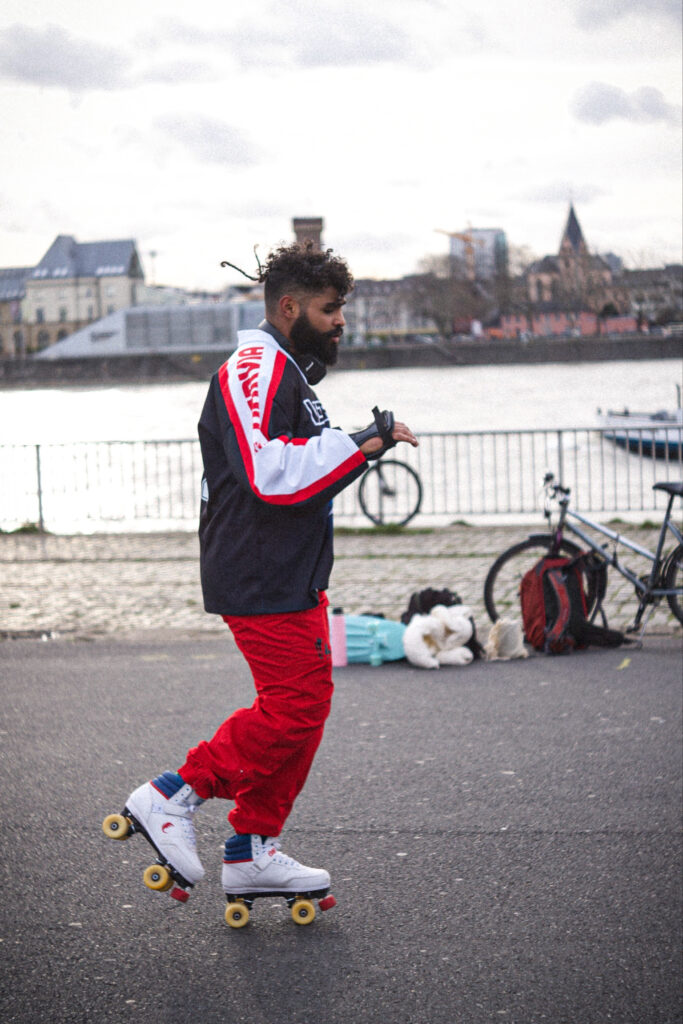
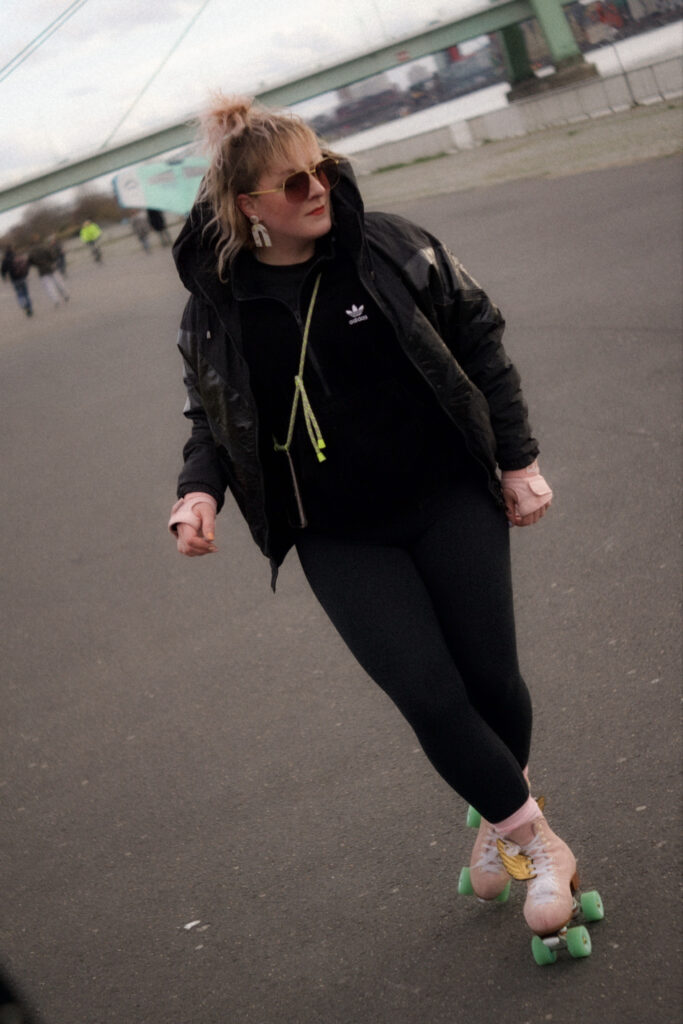
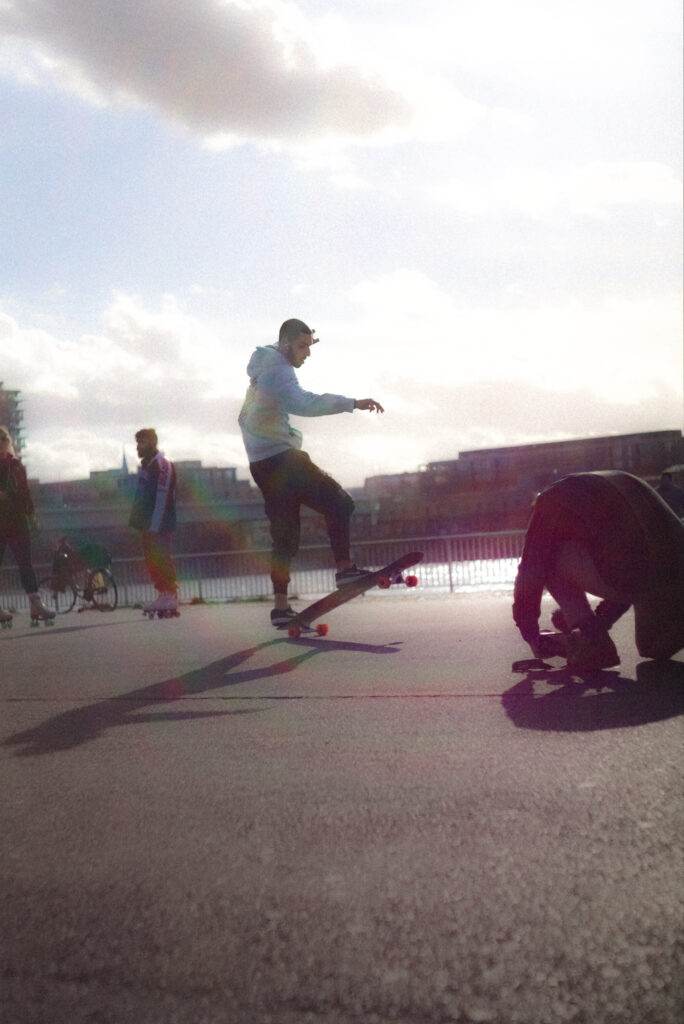
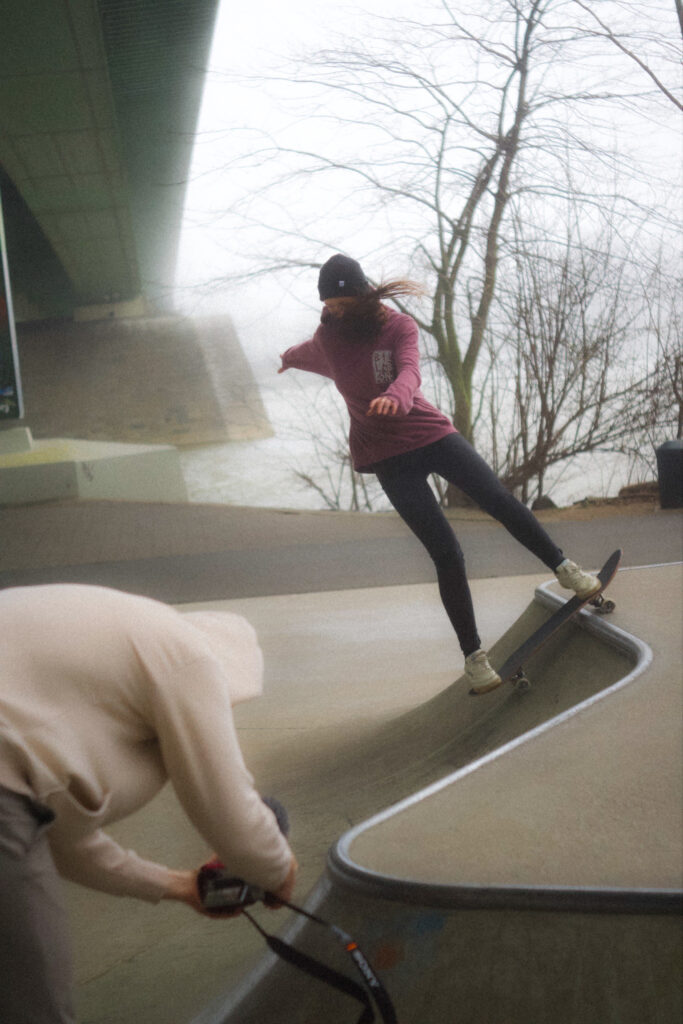
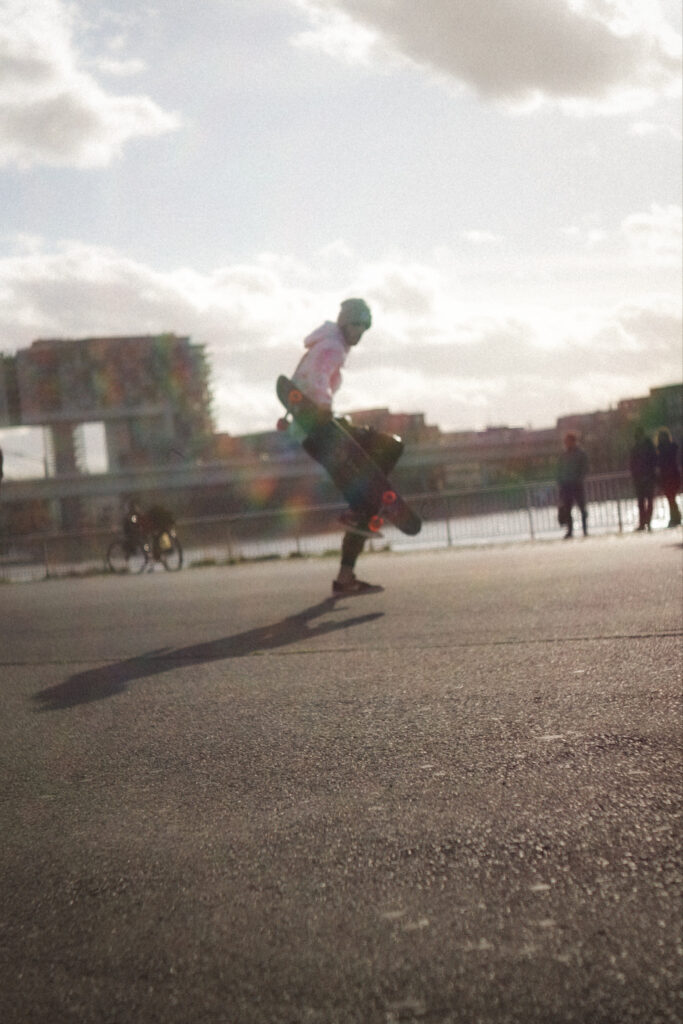
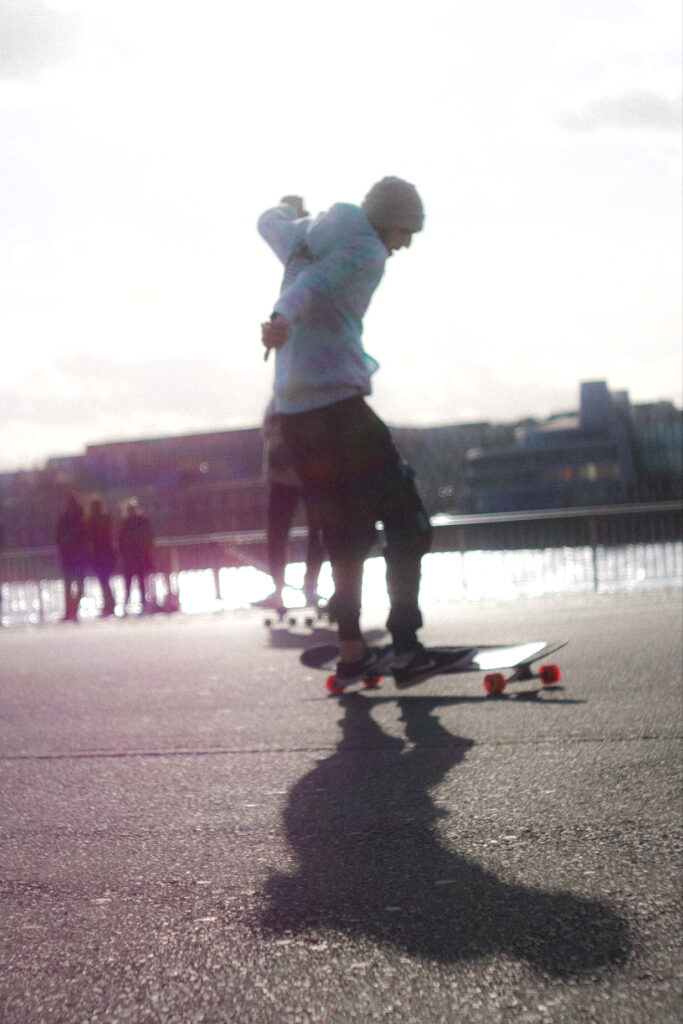
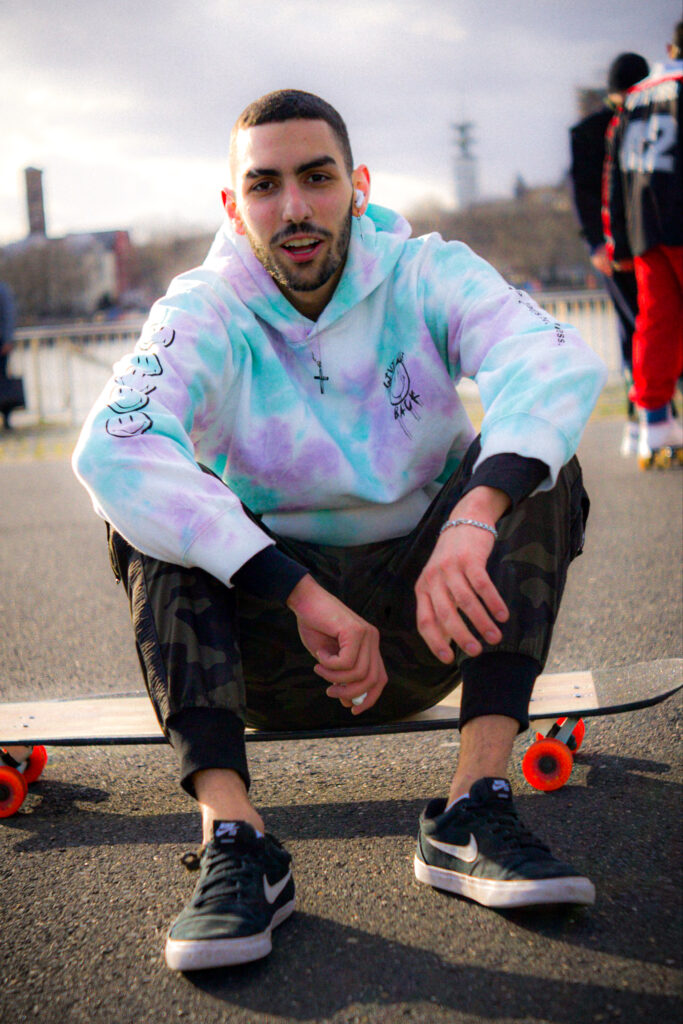
Website Design
I used Strato and Word-Press to host the website. My collaboration partner Lorena and I searched the internet for a reference website. I looked around at major plugin manufacturers and I particularly liked Universal Audio’s professional design. My goal was to create 2 pages for the website. The first page should be the landing page, structured like a shop page with the basic information about the plugin as well as price and reviews. The second page should be for the documentation of the production process.
I handed over the task of building the website to Lorena Stojanovic, 22 years old and a graduate of the University Of West London with a BA in Photographic and Media Design. We quickly agreed on the basic design, but the media from filming etc. and all texts were still missing for further processing, which is why we were only able to do this quite late in the course of the project. After all the media had been collected, the design and implementation of the texts began.
Audio
In particular, I was responsible for the entire organization and the music. First, together with the video team, I thought about what kind of stylistics we would find suitable for our ideas. First we agreed that we wanted to use a more orchestral, cinematic piece in the film. We also agreed that I would finish the music before we started post-production of the video. Editing on finished music is easier for videographers and makes it easier for them to be creative.
My first draft was designed accordingly, mainly orchestral in nature and showed characteristics of movie trailers. You can listen to the first draft here:
In particular, I was responsible for the entire organization and the music. First, together with the video team, I thought about what kind of stylistics we would find suitable for our ideas. First we agreed that we wanted to use a more orchestral, cinematic piece in the film. We also agreed that I would finish the music before we started post-production of the video. Editing on finished music is easier for videographers and makes it easier for them to be creative.
My first draft was designed accordingly, mainly orchestral in nature and showed characteristics of movie trailers. You can listen to the first draft here:
However, after we started shooting for the band Tessellate, we quickly realized that the rather dramatic style conveyed did not match the video material we were shooting. We had a lot of fun filming and you can feel that watching the footage. This just didn’t fit the previously developed music. Since we wanted to remain flexible and didn’t want to narrowly follow our planned line, I decided to make another draft. The focus for me was now creating a relaxed and happy atmosphere.
The song came about primarily through strumming around on my guitar. The arrangement is in the key of D-Min and the tempo is 80 BPM. Characteristic here is the sound of the arpeggios of the lead guitar, which consists of add9er chords. In general, the arrangement is kept very simple and consists of drums and sub-bass, lead and solo guitar, vocal chops which I cut together from various Apple loops and a few SFX.
The effects of the Marble plugin that are to be illustrated in the video are reverb, delay, filter and a modulation effect. Since it wasn’t clear at first how the scenes would be arranged, I reserved the right to use the effects until the shooting was finished and we could assign how we would arrange the scenes.
After the assignment was clarified, I started to implement the effects in the song. The reverb effect is clearly brought in from second 18 to 24 on the lead guitar to emphasize it and make the reference in the video clearer. I used the True-Verb plugin from Waves to create the reverb.
This is followed directly by the delay effect. From second 26 to 36 this is heavily mixed in on the solo guitar. I used the Replica XT plugin from Native Instruments to realize that effect.
From second 48, in which the video becomes a little quieter due to the scenes in Greece, a low-pass filter comes in, which acoustically supports the calm that occurs and thus emphasizes the next element of the plugin. The filter is a simple OneKnob Filter Plugin from Waves.
In this case, the effect of the modulation is a phaser and is used from minute 1 on the pre-master, making it clearly audible. The effect brings some variety into the playing loop. Here I used Logic’s Stock Phaser. The song provides relaxed summer-like vibes which fits great to the footage we were able to shoot.
I used a minimal amount of foley sounds to make the sound more organic. All sounds are actual footage from the shoot and are recorded with my Tascam DR-40X Recorder.
Reflection
Our project had its ups and downs. Due to the corona pandemic we had to overthink pretty much every step and it was difficult to plan ahead. When we set up dates to meet we nearly always had to reschedule because ones roomate is infected, or somebody you want to film has to attend to other important meetings and the risk is just too high. Due to this we were not able to hit a single deadline and everything was pushed back as a result. Nevertheless, our communication throughout the project was always active. We used the time to come up with new ideas and to think further. The shootings went really smooth and we had a lot of fun. We planned ahead a rough concept but adapted to the situations on site. When things didn’t go well we were good at improvising (one time some skaters thought we were the police collecting evidence against them with our cameras and recorders and weren’t happy at all about us being in their place). Overall I am very pleased with the spot and the website design. We tried to make connections between every scenes and every person with the plugin. Even though this was a huge amount of work we also focused on little details like documenting the whole process with photos or creating the „real“ analog device, thinking about user reviews etc.. This offered another creative opportunity to develop the website and to create great memories.
As almost always, there is room for improvement in the time management, which was really difficult this time. We could have started recording the scenes earlier and organized ourselves in a more structured way. Beside all those difficulties the project went well and it was a pleasure to work with these professionals. Huge thanks to everyone involved in this project!
